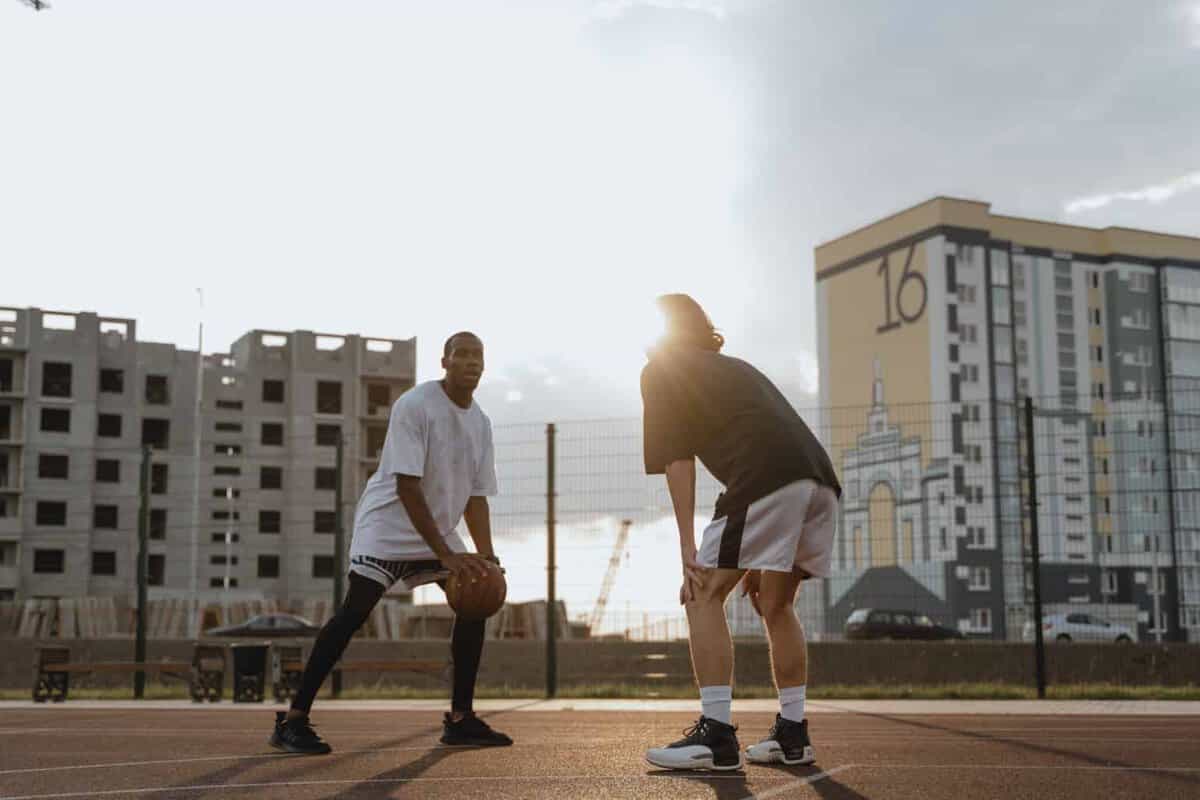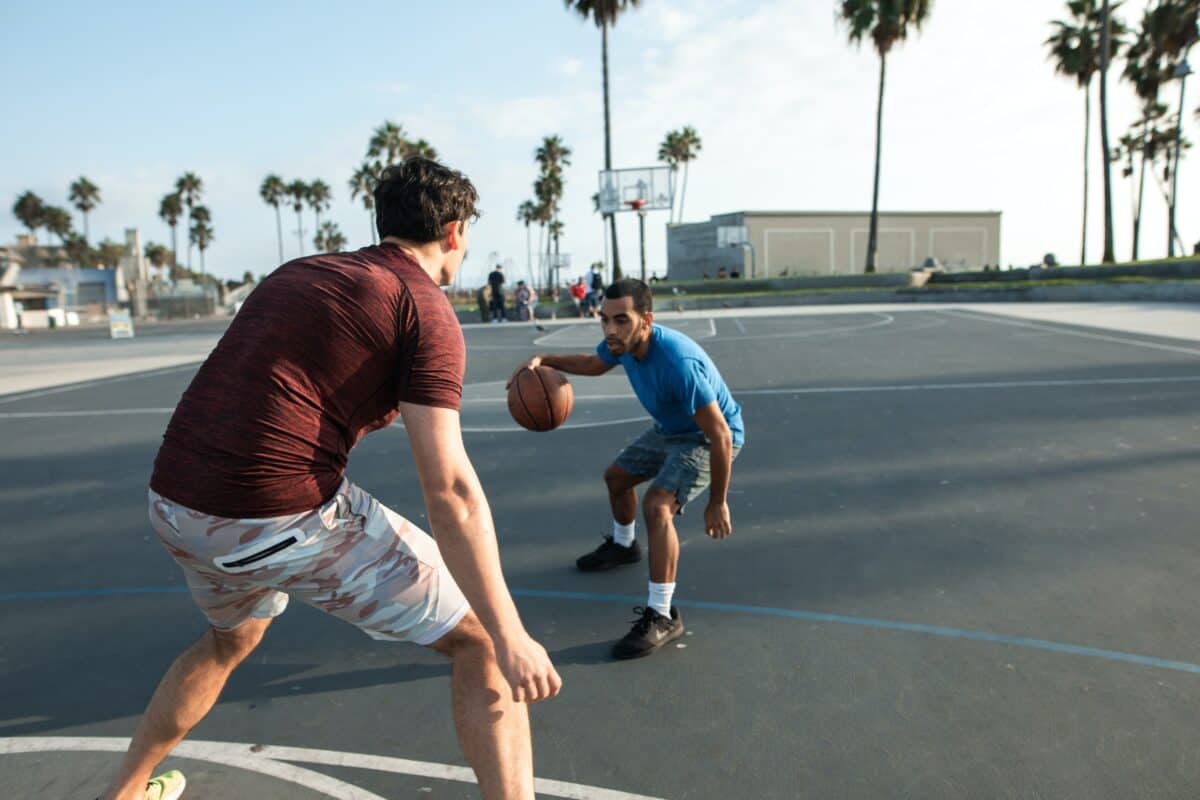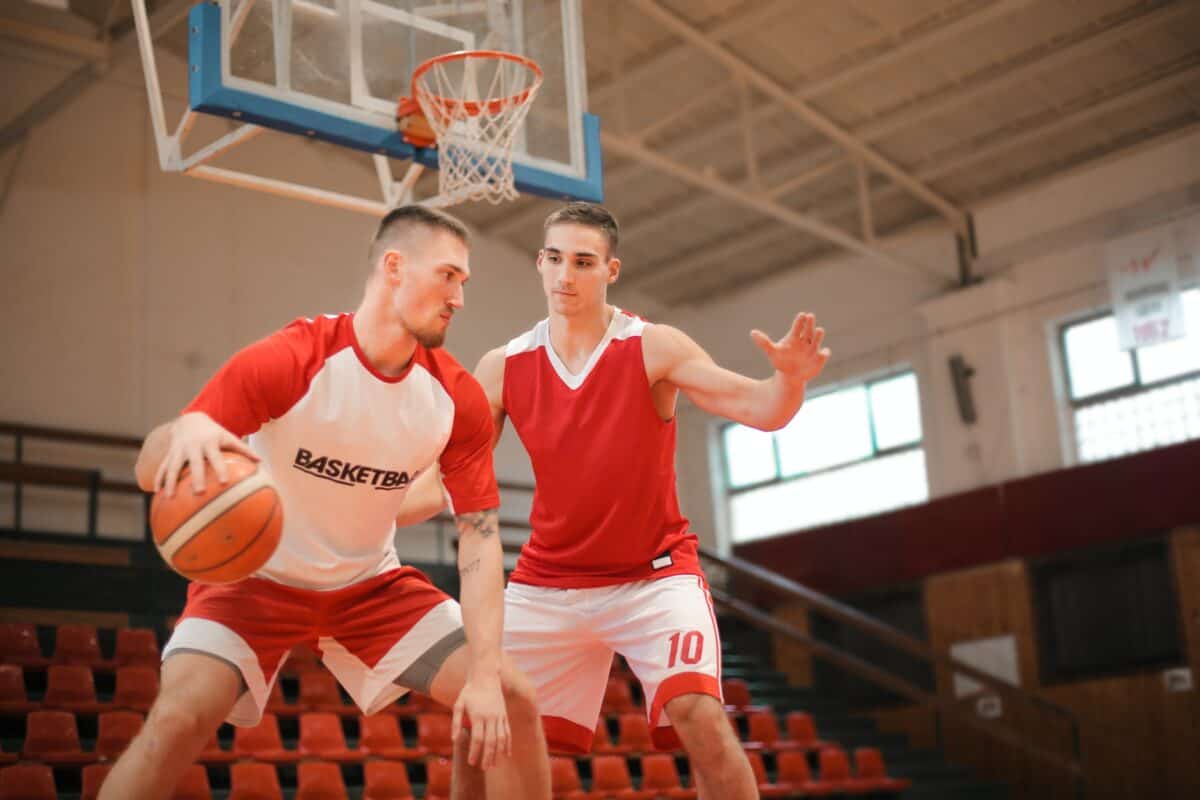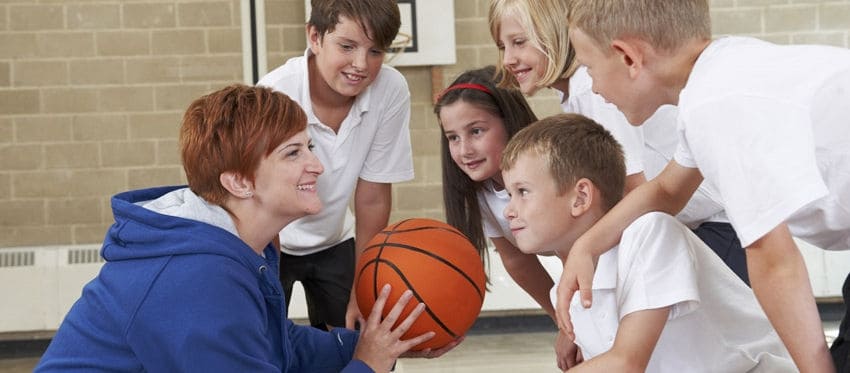In the following article, various aspects related to basketball are discussed: basketball games in Physical education, characteristics of the sport, possibilities of its treatment as educational content, and it concludes with a practical proposal to implement in Primary or Secondary by adapting it to the characteristics of the students.
Basketball games in physical education: conceptualization and characteristics
Basketball is a sport of collaboration and opposition, which corresponds to the motor actions of this type of activity. It is played on a court of 28 meters x 15 meters, with two baskets in the central area of the end lines of each.
The objective is to score baskets and surpass the opponent with the points obtained from them, counting these differently according to the distance from which the shot is made (1 point for free throws (after a foul), 2 points for baskets from inside the line, and 3 for those from outside the line (three-pointers)).
Each team has 5 players, and the game lasts 40 minutes, divided into 4 parts of 10 minutes each.
If we focus on basketball as educational content, we can propose didactic units to work on it specifically, or work on it in isolation in sessions of other contents, through different games that will be explained later.
Main rules of basketball games in physical education
The regulations of basketball games in physical education are a system of rules that guide sports practice and set the necessary requirements for the development of the game action.
Descubre la importancia de trabajar con deportes alternativos en Educación Física.
Veremos paso a paso, el auge en la última década de este tipo de deportes en el ámbito de la educación física, además se van a presentar dos propuestas prácticas para su desarrollo.
They establish the rules that determine the relationships of the participants (1):
- with other participants
- with the playing space
- with objects and/or implements
- the way they must adjust to the game time
Some of the most important rules for basketball games to develop normally, simulating the real practice of the sport, are the following:
- The ball can be thrown with one or two hands
- The ball can be dribbled with one hand or alternated with both hands
- Running with the ball in hand is not allowed.
- If a team commits three consecutive fouls without the opponent committing any in that interval, the opposing team will score one point.
- In 24 seconds, the team maintaining possession must shoot at the basket or lose possession.
- In 5 seconds, the player holding a ball must: pass it or dribble it.
- “Backcourt violation”: once the team with possession has crossed into the opponent’s court with the ball, they cannot return to their own court during the same possession.
Basketball games in Physical Education
Within basketball games in Physical Education, we can find a wide variety of alternatives.
Among others, it is worth noting that it has been demonstrated that the best game model to increase contact with the ball, decrease defensive pressure, and improve mobility and space occupation work is 3 vs 3 (1).
Additionally, reduced basketball games of 3 vs 3 are the most intense from the point of view of load, being a good option to achieve improvements in training and in the educational objectives set (2).
Considering this distribution of players, other basketball games in physical education or options to work with students are proposed:
- Tail thief: a popular game adapted to basketball games; players place a handkerchief on their back and move while dribbling a ball. The objective is to remove the maximum number of tails without losing yours and continuously dribbling the ball without losing possession.
- Tag with a ball
- Hawk with a ball
- Pac-Man following the lines, with a ball
- The handkerchief with a ball
- In short, within the possibilities of basketball games in physical education, we find any popular game, adding balls from the sport itself to the players so they move while dribbling.
Other basketball games in physical education that can be proposed by adding participation with shooting at the basket are:
- 5 passes or 10 passes with completion, with participation in 2 groups of about 4-5 people maximum.
- 21, for this, more baskets must be created with alternative material, as each group of 3,4 people must have a basket to be dynamic. Seeking to achieve 21 points individually before the teammates, throwing the ball from the place where it is received after the previous shot.
- Whites and blacks: We divide the players into two groups. All players with a ball. The groups are placed along the line that divides the half of the court, one on each side, and their reaction speed is worked on. Each time the coach says something related to the name of one of the groups, this one becomes the chaser and the other group the chased, and they have to catch the opponent while dribbling the ball without losing control, while the opponent flees with the ball in the same way.
- The 4 corners: four players form a square, each with a ball, and one player (with a ball) in the middle. When the player in the middle says “now,” everyone has to change the place they are occupying. Whoever is left without a corner goes to the center.
Finally, basketball games in physical education that represent the real game situation at the regulatory level, but varying the number of players, for example, 3×3 as previously mentioned, or 4×4 and using only one basket, progressing to the use of 2, and finally introducing 5×5 and real play.
It is important when working on content related to the sport to consider the characteristics of the students, their motivation, attitude, and emotions.
Not only in the more theoretical or practical and analytical exercises but also in basketball games where it seems that the game itself makes it a fun and motivating activity.
Students attribute their positive emotions to achieving goals, the playful component of tasks, and the positive memory of experiences around the activity performed.
On the other hand, they associate negative emotions with teasing, body dissatisfaction, poor motor performance, and exposure in front of the class (3).
For all this, it is necessary to ensure that the organization and implementation of activities are carried out as planned, taking into account all of the above.
In this way, the students’ perception is objective, and we achieve that they feel satisfied, promoting at the same time the practice of physical activity with more possibilities of practicing in the extracurricular field both basketball games and any other sports activity.
Practical proposal with basketball games in physical education
We can propose different alternatives, as mentioned, from complete didactic units to specific games to address a specific aspect within other units, for example, korfball or wheelchair basketball.
For implementation, one of the first aspects to consider is the methodology used.
For this, in this case, and given the characteristics of the sport, the Teaching Games for Understanding (TGfU) model is used, starting with the game, specifically with modified games (varying the number of players, rules, time, etc.) and the sport’s tactics, and after this, finishing the technical work based on existing needs (4).
For this last part of technical development, the ludotechnical model is used as it positively influences technical learning, being a very good alternative to work on this aspect of the content (5).
A session proposal for basketball games in physical education, for example, for 4th year of ESO would be the following:
- Autonomous warm-up with dynamic mobility and ball (5´) followed by tag with a ball, in which the group of 24 students is divided into 2 to make it more dynamic and played in parallel simultaneously. The 2 players who start tagging change roles when they tag a teammate (5´).
- The next 30 minutes are dedicated to basketball games:
- The fugitive: in 4 groups. Played at the same time. One escapes, and the other players pass the ball to tag by touching with it.
- Game in groups of 5 of the 4 corners, mentioned earlier.
- Relays (Teams of 4 players), a dribbling skill circuit is performed, where at the end of it, players shoot at the basket and run back to give the ball to their teammate to continue.
- 10 passes, in 4 teams, players with the ball cannot move. At the end of the 10 passes, the next element is performed to score the point, which is a shot at the basket made by the player carrying the ball.
- Cool down: partner massage with the ball and stretching.
Conclusions about basketball games in physical education
In conclusion, it can be said that conventional sports can also be motivating for all students by introducing attractive elements, an appropriate methodology, and capturing the students’ attention to improve and provide knowledge.
A good alternative to work on this is the realization during the sessions of basketball games, moving away from the simple execution of technical exercises or real practice where experienced players practice dynamically, while less experienced students are left on the sidelines.
Bibliographic references
- Arias, J. L., Argudo, F. M., & Alonso, J. I. (2011). Rules as didactic variables. Example in training basketball. International Journal of Medicine and Science of Physical Activity and Sport, 11(43), 491-512. Retrieved from: https://www.redalyc.org/pdf/542/54222177004.pdf
- Vaquera Jiménez, A., Suárez Iglesias, D., Vidania de Luis, L., & Calleja González, J. (2017). New approach to reduced games in basketball based on the number of players, subjective perception of effort, and recovery. Journal of Sport Psychology, 26(3), 0015-21. Retrieved from: https://ddd.uab.cat/record/171667
- Johnson, F. N. M., & Sánchez, A. C. J. (2020). Emotional perception of 3rd year ESO students regarding the practices of the basketball didactic unit in Physical Education. Spanish Journal of Physical Education and Sports, (429), 47-60. Retrieved from: http://www.reefd.es/index.php/reefd/article/viewFile/899/745
- Giménez, A. M. (2005). Teaching techniques in basketball initiation. Inde.
- Rubio-Castillo, A. D., & Gómez-Mármol, A. (2016). Effects of the Ludotechnical Model on technical learning, competence, and motivation in basketball teaching in Physical Education. SPORT TK-EuroAmerican Journal of Sport Sciences, 5(2), 41-46.





